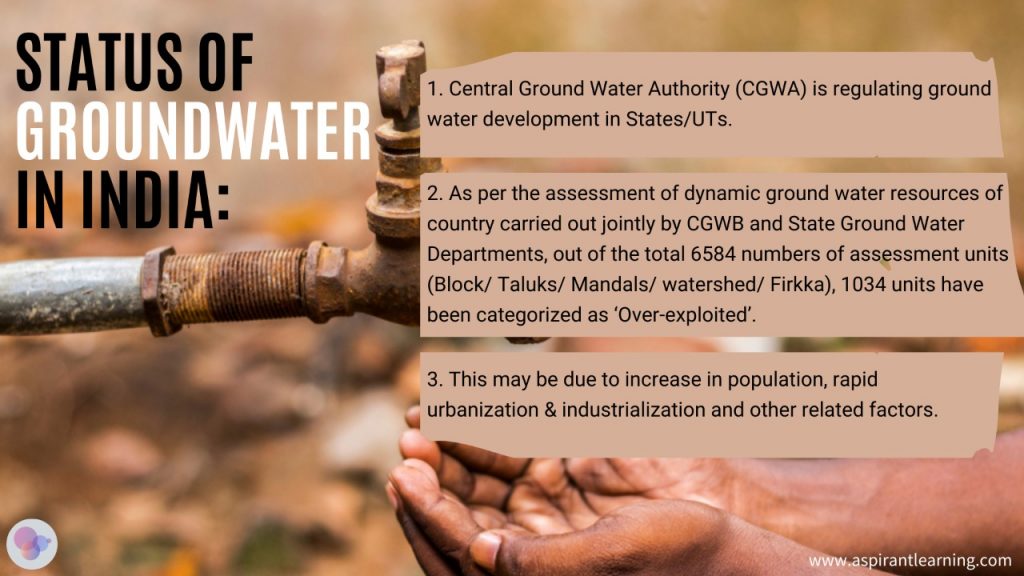News Highlights:
Recently, The third meeting of the National Level Steering Committee (NLSC) of the Atal Bhujal Yojana was held at New Delhi under the Chairmanship of Secretary, Department of Water Resources, RD & GR, Ministry of Jal Shakti.
Atal Bhujal Yojana:
- About:
- Atal Bhujal Yojana (ATAL JAL) is a Central Sector Scheme of the Ministry of Jal Shakti to improve groundwater management through community participation.
- The scheme has a total outlay of Rs.6000 crore and is to be implemented over 5 years (2020-21 to 2024-25).
- Atal Bhujal Yojana (ATAL JAL) is an initiative for ensuring the long-term sustainability of groundwater resources in the country.
- Aim:
- Atal Bhujal Yojana (Atal Jal) is targeted at sustainable groundwater management, mainly through convergence among various ongoing schemes with the active involvement of local communities and stakeholders.
- ATAL JAL has been designed to bring about behavioural changes at the community level for sustainable groundwater resource management.
- Beneficiaries:
- The scheme aims to improve groundwater management through community participation in identified priority areas in seven States, viz. Gujarat, Haryana, Karnataka, Madhya Pradesh, Maharashtra, Rajasthan and Uttar Pradesh.
- Implementation of the scheme is expected to benefit nearly 8350 Gram Panchayats in 78 districts in these States.
Components of ATAL JAL:
- Institutional Strengthening and Capacity Building Component:
- Institutional Strengthening and Capacity Building Component for strengthening institutional arrangements for sustainable groundwater management in the States, including improving monitoring networks, capacity building, strengthening of Water User Associations, etc.
- Incentive Component:
- Incentive Component for incentivising the States for achievements in improved groundwater management practices, namely, data dissemination, preparation of water security plans, implementation of management interventions through the convergence of ongoing schemes, adopting demand side management practices etc.
Implementation of ATAL JAL:
- Fund:
- The Central Government will bear 50% of the cost while the World Bank will provide the remaining 50% as a loan.
- To encourage participation by the community, it is planned that the Government will provide 50% of the money to the gram panchayats and states as incentives for dealing with the proper usage and conservation of groundwater.
- Funds will be made available to the states through grants.
- Funds will be provided to improve the institutions responsible for groundwater management and encourage community involvement.

Significance of Atal Bhujal Yojana:
- It will acknowledge and try to contain the ever-increasing problem of water resource depletion.
- It will improve groundwater management in water-deficient parts of India.
- It will foster behavioural changes that ultimately promote water conservation and efficient use.
Conclusion:
- The scheme aspires to support the Indian government’s objective of doubling farmers’ income and encouraging communities to use water optimally.
- The scheme boosts groundwater levels and creates sufficient water storage for agricultural purposes.
- The scheme focuses on the renewal of surface water bodies so that groundwater levels can be increased, especially in rural areas.
Pic Courtesy: Freepik
Content Source: PIB



